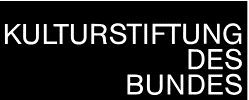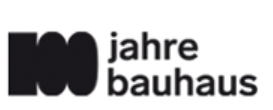Reflex Bauhaus. 40 Objects – 5 Conversations
Re-Flex Bauhaus
The title consists of 2 words.
Reflex means: quick reaction.
Bauhaus is a German word. It is the name of a famous school of architecture, design and art in the 20th century.
Re-Flex Bauhaus is the name of this exhibition.
Bauhaus was founded in Weimar in 1919.
Weimar is a city in Germany.
The artists at the Bauhaus wanted to create a whole new design.
The objects from Bauhaus have simple shapes.
They should be practical.
Mostly, they have no decoration.
In 1925, the Bauhaus school moved from Weimar to a city called Dessau.
At that time, our museum Die Neue Sammlung bought objects from Bauhaus.
Today, these are very valuable examples of modern design:
• Textiles by Anni Albers and Gunta Stölzl
• Toys by Alma Buscher and Ludwig Hirschfeld-Mack
• Metal objects by Otto Rittweger and Wilhelm Wagenfeld
Later, many other objects were added.
They are very important for the history of Bauhaus.
Some of these objects are exhibited for the first time.
They are from these artists:
• Theodor Bogler
• Marcel Breuer
• Josef Hartwig
• Naum Slutzky
• Wilhelm Wagenfeld
The Ernst von Siemens Art Foundation helped to buy objects.
Ernst von Siemens was a German businessman.
He made a big foundation. A foundation gives money for different purposes. For example: for museums.
The room installation by Tilo Schulz.
The artist Tilo Schulz has designed the exhibition.
Tilo Schulz has also invited 5 artists.
They come from 5 countries and from 5 different fields in art.
The artists have each chosen a Bauhaus object and made a new piece of art for it.
From this, the room installation was created.
Room installation means: a room is specially furnished.
In a room installation, the exhibition objects and the exhibition room belong together.
They are one unit.
With this room installation Tilo Schulz has connected past and present.
The new objects are connected to the old objects.
This is what Tilo Schulz means by the exhibition title Re-Flex:
The artists have reacted to the Bauhaus objects with their artworks.
These are the 5 artists:
• The German-Turkish fashion designer Ayzit Bostan
has chosen the slatted chair by Marcel Breuer.
This chair is made of simple wooden slats.
She has designed a new chair to go with the old one.
• The German writer Barbara Köhler has been inspired
by Christian Dell and Hermann Finsterlin.
She has created a picture out of words.
• The Indian architect Anupama Kundoo has taken a fabric
by Gunta Stölzl.
She is interested in material and colors.
• The Japanese musician Junya Oikawa was inspired
by the chess game of Josef Hartwig.
He has thought up musical sounds to go with it.
• The Danish artist Sofie Thorsen was inspired
by objects by Hermann Finsterlin.
She transfers the forms into another material.
The artists have studied the old objects very closely.
In doing so, they have made possible a new look at the history and meaning of Bauhaus.
It turns out: Bauhaus continues to influence design until today.
Plan a visit
Where?
-
Barer Straße 40, 80333 Munich
Open:
-
Daily 10:00 – 18:00
-
Monday closed
-
Thursday 10:00 – 20:00
View of the exhibition
-
Exhibition view.Photo: Die Neue Sammlung (A. Laurenzo)
-
Exhibition view.Photo: Die Neue Sammlung (A. Laurenzo)
-
Exhibition view.Photo: Die Neue Sammlung (A. Laurenzo)
FAQs
A visit to the Pinakothek der Moderne costs
regular 10 Euro
reduced admission 7 Euro
Sunday admission 1 Euro
Children and young people under the age of 18 have free admission.
We cooperate with Kulturraum München.
You can buy a ticket at the ticket office on site or online. You can find more information on the Pinakothek der Moderne website.
You can find an overview of accessibility at the Pinakothek der Moderne on the Kultur barrierefrei München website.
The design museum also offers an inclusive touch station in the X-D-E-P-O-T, which everyone can explore independently.
We provide an overview of what is going on at Die Neue Sammlung under programme. You can find out everything about guided tours and group bookings on the Pinakothek der Moderne website.
-
Curated by:
Xenia Riemann-Tyroller, Josef Straßer
-
Supported by:
Bauhaus heute Fund of the German Federal Cultural Foundation,
PIN. Freunde der Pinakothek der Moderne e.V.

